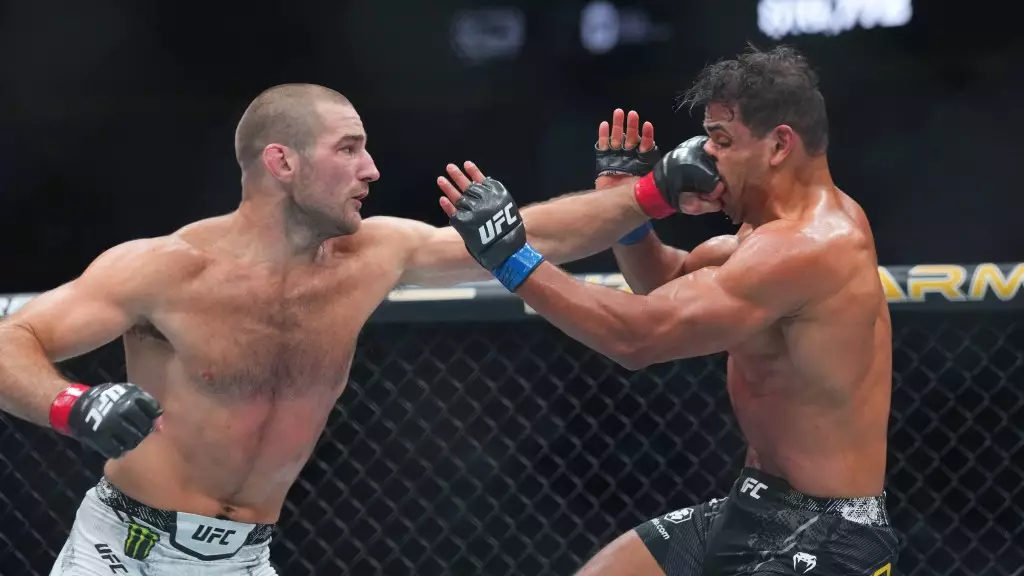As Sean Strickland prepares to challenge Dricus Du Plessis for the middleweight championship, the fighter’s career has come under scrutiny for a disconnect between his assertive pre-fight declarations and the results of his matches. With a professional record of 29 wins and 6 losses, including 16 victories within the UFC, Strickland has carved out a reputation as a technical fighter. Despite his claims of engaging in a “war” inside the octagon, many critics point to the fact that a significant number of his fights conclude with judges’ decisions rather than dramatic knockouts or submissions.
This contradiction is not lost on his upcoming opponent, Du Plessis, who has consistently highlighted this aspect of Strickland’s fighting. With an undefeated UFC record of 8-0 and a total of 22 victories overall, Du Plessis challenges the authenticity of Strickland’s persona. Strickland’s commitment to a striking-centric battle raises eyebrows, particularly when matched against opponents who excel in technical exchanges.
Strickland argues that the nature of his fights often paves the way for technical chess matches rather than all-out brawls. According to him, the level of competition he faces dictates the pace and style of the fight. When pitted against elite fighters, Strickland believes the contest becomes a strategic bout, requiring defensive maneuvers and calculated risks. He cites his encounters with top-tier strikers, such as Bellator champion Johnny Eblen, where experience and skill supersede mere aggression.
The fighter’s perspective sheds light on the complexity of elite-level competitions and the implications of facing world-class athletes. The demand for higher strategies and skills reflects the evolution of MMA, where explosive finishes become secondary to skillful performances against equally matched opponents.
The subjective nature of judging in mixed martial arts raises further questions. Strickland recognizes that his technical fighting style may not always resonate with fans or judges who favor more visually appealing bouts. “Four-ounce gloves, with a cage, it’s harder to see,” he states, elucidating the difficulty in appreciating the finer details of a bout when the aggression isn’t foregrounded. This dichotomy between the fight’s visual narrative and its technical underpinning leads to controversy, as close decisions often spark debates among fans and experts alike.
Moreover, Strickland’s run-in with Du Plessis at UFC 297, which resulted in a decision many considered close, adds fuel to the fire. The implications of such judgments can shape career trajectories and public perception, creating a quagmire for fighters who rely on their bread-and-butter techniques to secure wins.
As Saturday’s title fight at Qudos Bank Arena approaches, Strickland finds himself at a crossroads. The clash with Du Plessis is not just a chance at gold but an opportunity to reshape his legacy in the MMA world. Will he be able to adapt his strategy and bridge the gap between his brash proclamations and in-octagon execution? Time will tell if Strickland can transform critics’ perceptions and prove that his prowess lies beyond decision victories.

